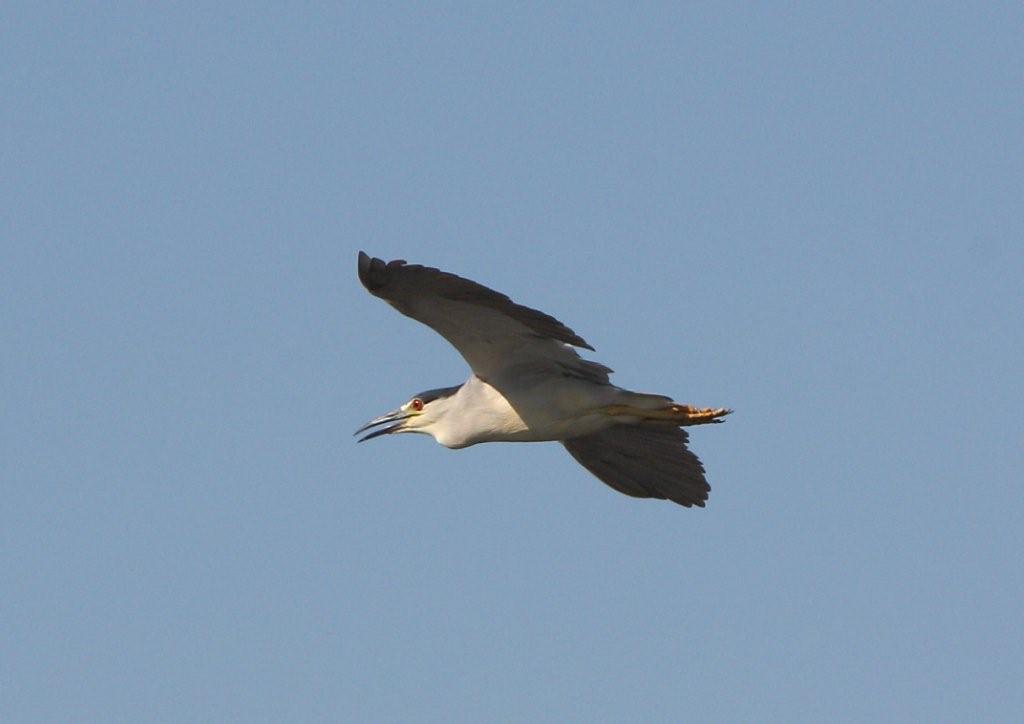Posted by Dan Arndt
This fall, Bob Lefebvre and I are running one of the Sunday morning groups this year, and while this is the second week for the group, it’s my first week back from vacation.
Lafarge Meadows, one of the locations I always am finding new birds at, was our location for the day, and in our 5.75 km walk up and down the river bank, dodging golf carts and buses, we managed to see a pretty decent number of species. The annotated map shows our general route, as we headed from the Boat Launch, clockwise following the river, then back north along the paved path.

Our Route
On the ponds at the north end, we were given good close looks at a Great Blue Heron, seen here giving a brief lecture to some unruly Mallards that had taken over its roost. It flushed them away, or at least attempted to, before going back to its business of catching its breakfast.

Great Blue Heron giving a lecture

Attempting to frighten off the surly Mallards

Soon the heron realizes the futility of its ways and goes back to fishing.
As we looked over the pond, we were briefly interrupted by a small group of migrants, including Common Yellowthroat, Orange-crowned Warblers, and a few Lincoln’s Sparrows, before we looked back up over the pond to see some familiar faces (or familiar bills, perhaps?) The always entertaining Bufflehead, ever-present Lesser Scaup, and a lone American Wigeon even made an appearance.

Bufflehead

Lesser Scaup

American Wigeon
As we trekked southward, into the fray with golf carts whizzing by us and the noise of what seemed like hundreds of visitors to some other festivities in the park, we veered off toward the river, where we saw no small number of Double-crested Cormorants, Lesser Yellowlegs, and even at least two Osprey, hunting for fish over the Bow River.

Double-crested Cormorant

Lesser Yellowlegs

Osprey
Even deeper into the brush and further from the trail we happened across a few more warblers in the trees, including this Yellow-rumped Warbler, and a pair of House Wrens angrily chipping away at us.

Yellow-rumped Warbler
While we tend to focus on the birds on the blog, we all have a soft spot for butterflies, and this Milberts Tortoiseshell that posed quite nicely for everyone was no exception. It also marked the beginning of our trek back to the north, with the sun at our backs.

Milberts Tortoiseshell
As we were once again inundated with the golf carts and busy pathway, we kept our heads clear and our goals in sight, checking the ponds and sloughs on each side of the path as we went, and we turned up quite a few nice surprises. Each of them was more striking, with the Pied-billed Grebe surfacing now and again in an algae-choked pond, a pair of juvenile Ruddy Ducks in amongst the American Coots, and another Green-winged Teal flocking in with some more precocious Mallards!

Ruddy Duck

Green-winged Teal

Pied-billed Grebe
Finally, as the finish line was in sight and our long walk had ended, we found ourselves staring long and hard at this intrepid Cooper’s Hawk, soaring on the thermals in search of its next meal.

Cooper’s Hawk
Next week: Mallard Point!





















































































